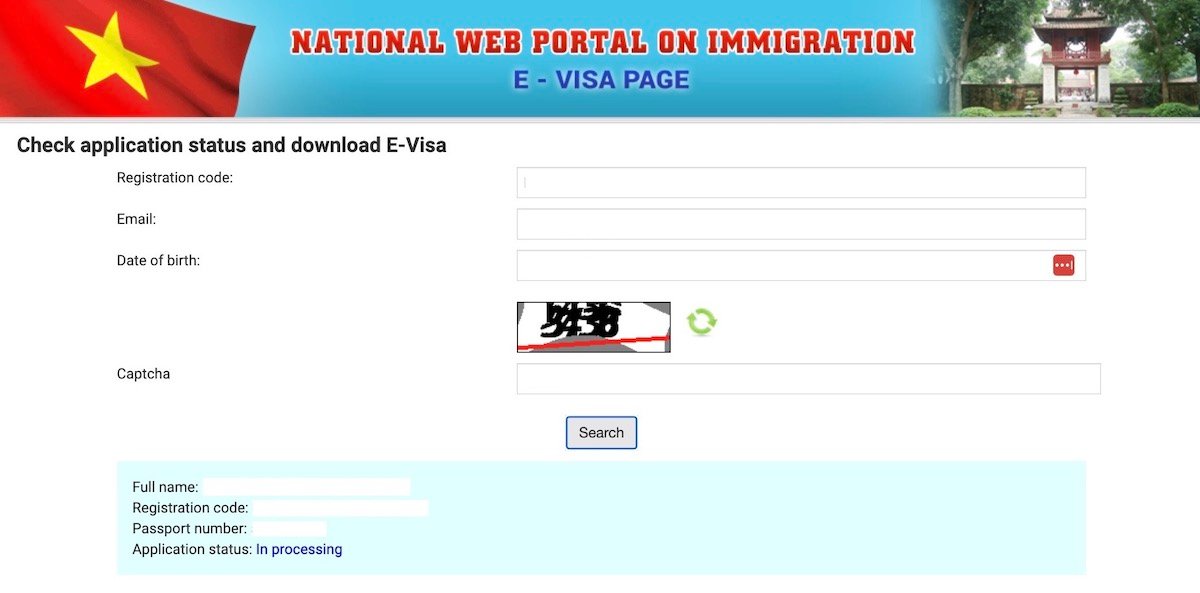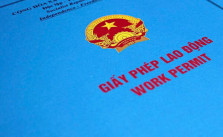2023 Complete Guide to Vietnam eVisa
Vietnam has become a popular travel destination among tourists around the world. With its rich culture, stunning landscapes, and delicious cuisine, it’s no surprise that many people want to visit this country. One thing you’ll need before traveling to Vietnam is a visa. In recent years, Vietnam has introduced an eVisa system, making it easier for travelers to obtain their visa online. In this article, we will provide a detailed guide on everything you need to know about Vietnam eVisa.

Who Needs a Vietnam eVisa?
Not everyone needs a Vietnam eVisa to enter the country. The following nationalities are eligible for a 30-day single-entry eVisa:
- Argentina
- Armenia
- Australia
- Azerbaijan
- Belarus
- Brunei
- Bulgaria
- Canada
- Chile
- China (including Hong Kong and Macau SARs)
- Colombia
- Cuba
- Czech Republic
- Denmark
- Finland
- France
- Germany
- Greece
- Hungary
- Iceland
- India
- Ireland
- Italy
- Japan
- Kazakhstan
- Korea (South)
- Latvia
- Liechtenstein
- Lithuania
- Luxembourg
- Myanmar
- Mongolia
- Netherlands
- New Zealand
- Norway
- Panama
- Peru
- Philippines
- Poland
- Portugal
- Romania
- Russia
- Slovakia
- Slovenia
- Spain
- Sweden
- Switzerland
- Timor Leste
- United Arab Emirates
- United Kingdom of Great Britain and Northern Ireland
- United States of America
- Uruguay
- Vanuatu
- Venezuela
If your nationality is not on this list, you’ll have to apply for a traditional visa through the Vietnam embassy or consulate in your home country.
What is Vietnam eVisa?
Vietnam eVisa is an electronic visa that allows travelers to enter Vietnam for up to 30 days for tourism, business, or transit purposes. The eVisa is issued by the Vietnamese Immigration Department. It’s a single-entry visa, which means you can only use it once to enter Vietnam.
When to Apply for Vietnam eVisa?
It’s recommended to apply for Vietnam eVisa at least 3-5 business days before your trip. However, you can apply up to 60 days in advance. Keep in mind that processing times may vary, so it’s best to apply as soon as possible.
How to Apply for Vietnam eVisa?
To apply for Vietnam eVisa, follow these steps:
- Go to the official website of the Vietnam Immigration Department’s eVisa portal.
- Fill out the application form with your personal information, passport details, and travel plans.
- Upload a scanned copy of your passport’s biographical page and a recent passport-style photo.
- Pay the eVisa fee using a credit card or debit card.
- Wait for the application to be processed. You’ll receive an email with the eVisa attached as a PDF file if your application is approved.
Pros and Cons of Vietnam eVisa
Like any visa option, there are pros and cons to getting a Vietnam eVisa. Here are some of the main ones:
Pros
- Convenience: You can apply for and receive your visa online, saving time and hassle.
- Cost-effective: The eVisa fee is lower than traditional visa fees.
- Fast processing: In most cases, eVisas are processed within three business days.
- No need to visit an embassy or consulate: You can apply for an eVisa from anywhere with an internet connection.
Cons
- Single entry: Unlike some traditional visa types, eVisas are single-entry only, so if you leave Vietnam during your visit, you’ll need to apply for a new visa to re-enter.
- Limited validity: eVisas are only valid for 30 days from the date of entry.
- Not available to all nationalities: Only certain nationalities are eligible for an eVisa.
Alternatives to Vietnam eVisa
If you’re not eligible for a Vietnam eVisa or prefer a different visa option, here are some alternatives:
- Traditional visa: You can apply for a traditional visa through the Vietnam embassy or consulate in your home country.
- Visa on arrival: If you’re flying into Vietnam, you can apply for a visa on arrival. This involves obtaining a pre-approval letter online before arriving in Vietnam and then getting your visa stamped at the airport upon arrival.
- Visa exemption: Some nationalities are exempt from needing a visa to enter Vietnam for a certain period. For example, citizens of ASEAN countries can visit Vietnam without a visa for up to 30 days.
Step-by-Step Guide to Applying for Vietnam eVisa
Here is a step-by-step guide to help you apply for Vietnam eVisa:
- Visit the official website of the Vietnam Immigration Department’s eVisa portal.
- Click on “For Foreigners” and select “E-visa Issuance.”
- Create an account by providing your email address and creating a password.
- Fill out the application form with your personal information, passport details, and travel plans.
- Upload a scanned copy of your passport’s biographical page and a recent passport-style photo.
- Pay the eVisa fee using a credit card or debit card.
- Wait for the application to be processed. You’ll receive an email with the eVisa attached as a PDF file if your application is approved.
Compare Vietnam eVisa with Other Visa Options
To help you decide which visa option is best for you, here is a comparison between Vietnam eVisa and other popular visa options:
Vietnam eVisa vs. Traditional Visa
- Cost: eVisa fees are lower than traditional visa fees.
- Processing time: eVisas are usually processed faster than traditional visas.
- Convenience: eVisas can be applied for and received online from anywhere with an internet connection, while traditional visas require a visit to a Vietnam embassy or consulate.
- Validity: Traditional visas may have longer validity periods than eVisas, allowing multiple entries over a longer period.
Vietnam eVisa vs. Visa on Arrival
- Entry points: Visa on arrival is only available for those flying into Vietnam and arriving at specific airports, while eVisas can be used at any of Vietnam’s international border checkpoints.
- Application process: Visa on arrival requires obtaining a pre-approval letter online before arriving in Vietnam, while eVisas can be applied for and received entirely online.
- Validity: Both visa options are valid for 30 days from the date of entry.
Tips for Applying for Vietnam eVisa
Here are some tips to keep in mind when applying for Vietnam eVisa:
- Make sure your passport has at least six months of validity from the date of entry into Vietnam.
- Double-check all information on your application form before submitting it.
- Upload clear and recent copies of your passport’s biographical page and a passport-style photo.
- Apply for your eVisa as soon as possible to allow enough time for processing.
The Best Way to Get Your Vietnam Visa
If you’re eligible for a Vietnam eVisa, it may be the best option for you due to its convenience, cost-effectiveness, and faster processing times. However, if you’re not eligible, other visa options such as traditional visas or visa on arrival may be better suited for your needs.
FAQs
- Can I extend my Vietnam eVisa? No, eVisas cannot be extended. If you need to stay in Vietnam for more than 30 days, you’ll have to apply for a traditional visa.
- How long does it take to process a Vietnam eVisa? In most cases, eVisas are processed within three business days. However, processing times may vary.
- Can I enter Vietnam multiple times with an eVisa? No, eVisas are single-entry only. If you leave Vietnam during your visit, you’ll need to apply for a new visa to re-enter.
- How much does a Vietnam eVisa cost? The fee for a Vietnam eVisa is $25 USD.
- Which nationalities are eligible for a Vietnam eVisa? Currently, citizens of 69 countries are eligible for a Vietnam eVisa. See the list under the “Who Needs a Vietnam eVisa?” subheading.
Conclusion
Obtaining a visa is an essential step for anyone planning to travel to Vietnam. With the introduction of the eVisa system, applying for a Vietnam visa has become more convenient and cost-effective than ever before. We hope this guide has provided all the information you need to know about Vietnam eVisa. Remember to apply early, double-check your application, and have a fantastic trip to Vietnam.



